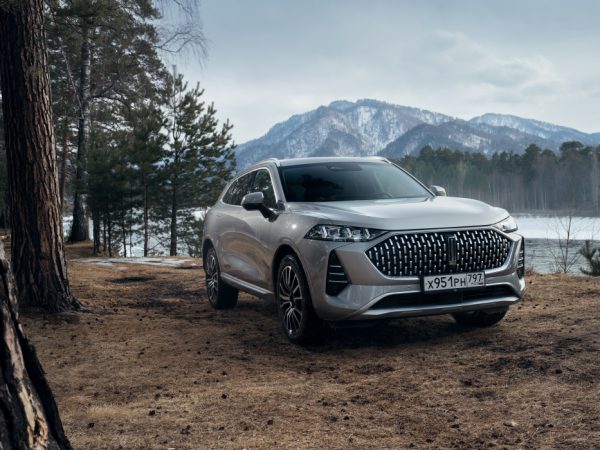Waverley Coupe, 1910
Times change.
But the electric cars still seem something much of us from the future though for the first time they appeared at the end of the 19th century. Meanwhile, this future already became reality, thanks to the hybrid Porsche 918 Spyder, McLaren P1 and Ferrari LaFerrari supercars.
Those of us who spend inappropriate amounts thinking about cars have never really warmed to the idea of electric cars. A bit like Michelin star-studded chefs never really warmed to microwaving food. Something just doesn’t quite seem right. In fact, it’s probably fair to say for the longest time electric cars have been something of a joke to us. And there was plenty to joke about, like the fact they would take many hours to recharge and then only take you on a short trip before you’d find yourself on the side of the road begging with an electric plug in your hand. The batteries inside them are heavy, and have a limited life span. All in all, it seemed electricity and cars were just not a very good match.
A decade or so ago, some of that changed, as hybrid cars like the Toyota Prius went into full scale production. These «hybrids» have a regular engine which burns liquid dinosaurs but also use electric engines in situations where the combustion engine is inefficient. During slow city driving for example. The batteries are charged while the regular engine when it is running, and also during decelleration when the brakes would normally be converting the car’s kinetic energy into useless heat. In other words, as much energy as possible is being recovered and stored into batteries for later use.
It was an impressive technological leap at the time, and cars like the Toyota Prius have certainly sold quite well to eco-minded drivers, celebrities who wanted to appear eco-minded, and people who generally had no affection for cars whatsoever. How environmentally friendly these hybrids really are is subject of some debate, actually. Because although they are quite successful at using less fuel, the energy and materials required to actually produce a hybrid car cause more pollution than building a regular car. Particularly some of the materials required to make the batteries are the result of some pretty nasty industrial activity. It’s the thought that counts, I suppose.
Now, however, it appears that times really could be changing. Should you accidentally come across a Formula One race on your TV on a random Sunday, you may notice that the cars don’t seem to be as loud as they used to be. The reason for that is that F1 introduced new engine regulations this year. Gone are the big, loud, kitten-eating V8 engines. They’ve all been replaced engines that are smaller than what most of us have in our grocery-getting cars. To compensate for the downsizing, they have strapped on a gigantic turbocharger and added an electric motor combined with a sizeable battery pack.
Yes, the sport best known for consisting of playboys who use gasoline as deodorant is now using engines that are entirely kitten-friendly.
Kidding aside, it is difficult to overstate the significance of Formula one going hybrid. The fans aren’t quite on board yet, but the car manufacturers who are writing 100-million dollar checks for engine development certainly are. To them, hybrids are no longer the future — they are a reality. And they don’t want to be on TV with their names all over prehistoric engines which have no relevance with what you find in their showrooms.
Tempting as it may be at this point to put on my old man voice and say things were so much better before this and that was invented, there may be a silver lining here. There are actually three very good reasons for us to keep our chins up: the Porsche 918, McLaren P1 and Ferrari LaFerrari.
![]()
Porsche 918 Spyder
![]()
McLaren P1
![]()
Ferrari LaFerrari
These cars are quite different from each other, but have one big thing in common: each of them is a hybrid. But instead of using hybrid technology to save the planet or make you look good like a good person on Oprah, these cars use electricity simply to go faster. Adding the advantages of electric drive to a high powered petrol engine produces quite dramatic results. An electric motor can provide power any time you want, a petrol engine does not. Use both engines to deliver power at the same time, and what you get is face-melting acelleration from any engine speed. Yes, you also use quite a bit of fuel in the meantime, but believe me, it’s worth it.
F40 was a cool name. Ten years later, F50 wasn’t quite original but at least it made sense in terms of continuity. The F60 was called «Enzo» which is fair enough I suppose. But to call F70 «LaFerrari» is inexcusable. Boeing isn’t going to build a new plane and call it the Boeing TheBoeing. Only Motorhead can make a song called Motorhead and get away with it.
If you can get past the most inappropriate name ever to grace a 1 million Euro Ferrari, you do get quite a bit for your money. About 950 horsepower for a start. 789 of which are produced by a glorious sounding 6,3 litre V12 engine. There is no doubt that the F70 (yes, that’s what I’m going to call it) will win the acoustic contest. It’s also the lightest car out of the 3, weighing in at only 1255 kilograms. That’s quite a bit less than a VW Golf, which means the power to weight ratio is putting everything including a Bugatti Veyron to shame. This is probably the best car Ferrari have ever made. The car reportedly feels entirely normal, like a big and very very powerful 458, and you never really notice that part of the power is made by electricity. Still no excuse for the name though.
![]()
![]()
The McLaren P1 has to make do with 903 horsepower for its 1450 kilograms, which is still nothing to sniff at. It uses a twin-turbo V8 which is plenty powerful and plenty efficient but doesn’t sound nearly as good as the Ferrari V12. But it does boast massive aerodynamic downforce to keep you glued to a racetrack and has adjustible ride height, allowing it to ride very low on a racetrack but high enough on the road to negotiate speedbumps. The aerodynamics are active — controlled by computers — just like on the F70 but its wings are simply quite a lot bigger. On an actual racetrack, it will probably lap quicker than the Ferrari — at the cost of not being quite as musical and looking a bit Batmobile-ish.
![]()
![]()
The Porsche 918, unsurprisingly, is the most sensible of the three. On an actual road in the actual world, the Porsche 918 is probably the fastest of all despite having less power and more weight than its rivals. 887 horsepower for 1640 kilograms to be precise. It has 4-wheel drive, which means it is easily the fastest car to 100 km/h with a time of merely 2,5 seconds. It lapped the Nürburgring Nordschleife in 6 minutes and 57 seconds, which is probably faster than McLaren managed since they refused to release the P1’s lap time after doing considerable testing there. If we had to box each car into a stereotype, the 918 would be a ludicrously fast road car while the McLaren is a track car and the Ferrari spends much of its time livening up the streets of Monaco.
![]()
![]()
The Porsche and McLaren have a full electric mode, which means you can drive the car without using the combustion engine — almost entirely silent. Ferrari skipped this completely and just made a normal car where the electric parts are only responsible for adding performance. But the Ferrari does, like the Porsche, recover energy under braking — something the McLaren does not do. Clearly there are some differences in philosophy between these manufacturers, but the end result is three stunning cars which almost redefine what is physically possible. Not long ago, the fastest supercars had 500-something horsepower engines. Now we are quickly approaching one thouuuusand, which would have seemed absurd a few decades ago.
When Marty McFly visited the year 2015 in «Back to the future» he found flying cars and a weather service that could predict the weather down to the second. Clearly, these things didn’t quite happen yet. But the latest hypercars from Porsche, Ferrari and McLaren make flying seem almost…too easy. They show us that instead of electriciy replacing petrol, both can be used together to create a recipe for cars that are faster and more exciting than any car before them.

Last article
Monaco Special: Monaco Grand Prix – the racer’s dream
The Formula One Grand Prix of Monaco takes place this coming weekend, a stone’s throw away from Cannes where the Palme d’Or is about to be awarded.
Admittedly, the Grand Prix
itself is rarely very exciting as it is nearly impossible for cars to overtake on the narrow, twisty sections of Monte-Carlo’s streets.
There is a brief 15-minute period of excitement on Saturday however, when Qualifying is in its final stages and the battle for pole position is fought. Whoever starts from the best place on the grid has an extremely good chance of actually winning the race on Sunday, more so than on any other track on the F1 calendar.
Read more…![]()











